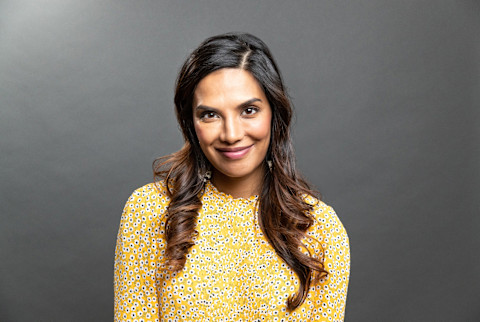3 Ways To Make Sense Of Conflicting Information When It Comes To Nutrition

There's a lot of conflicting views when it comes to nutrition: Are eggs good or bad for us? Is low-carb the way to go? How often should we eat animal-based products?
The reality is, there's always going to be research study after research study to debunk just about any finding when it comes to nutrition—just ask epidemiologist Amitha Kalaichandran, M.D., MHS, CPH, who is excited about an integrative approach to medicine but realizes we have a long way to go before anything is considered a best practice.
"There's just so many factors that effectively mean we can't take any one study and just apply it into our lives," she tells me on this episode of the mindbodygreen podcast.
In other words, nutrition science is such a robust field that we're just beginning to scratch the surface of in terms of how it can affect our health, making it that much more difficult to navigate.
So, how should we make sense of all the information that's out there? Here are three tips to navigate the wide world of nutrition:
Learn how to read (and understand) a research study.
The first step to tackling the information is to read and understand it the correct way. Too often, people will skim over journals (or worse, just read clicky headlines) and change their routines without taking a deeper look. According to Kalaichandran, it's imperative to make sure you understand the research you're reading, especially the little nuances in the information.
She explains her full curated list of nine factors to watch out for in a New York Times article, but she and I chat about a couple of key nuances:
"A lot of the issues that come out in terms of headlines is often a study will be done in rats or something," Kalaichandran explains. So first, ask yourself: Was the study done in animals or humans? While experiments on mice can be the first step toward correlation in humans, it by no means is a tell-all—much more research is necessary before you can apply the findings to your own life.
Another nuance she mentions is generalizability. It's crucial to look at the sample size of a research study: Was it done on men or women? How old were they? A study might not have the same results, even if the experiment was replicated identically, in a different sample of participants.
Kalaichandran explains further: "If a study is done on college-educated men between the ages of 45 and 60 or something, it may not apply to your wife. Or a research study done on men or on college students may not apply to your grandmother."
That said, even if you notice that a study was, in fact, done in humans, there are more factors you should look out for before you blindly apply it to your own life.
Have civil discourse with conflicting ideas.
Kalaichandran mentions that one of the worst things we can do in terms of nutrition is to confirm our ideas with people who share our same ideals—it's much better, she says, to have open discussions with people who disagree with you in order to reach a balanced, productive conclusion.
"You may not change the person's mind, but the goal is to have civil discourse and to open up your own mind a little bit, as opposed to ganging up on a person because they're spreading pseudoscience," Kalaichandran explains.
That said, you might want to have open discussions to really get to the bottom of nutrition science. Are you a die-hard keto fan? Chat with someone who believes whole carbs have a place on your plate. Passionate about the health benefits of a plant-based lifestyle? Grab a friend who loves meat and dig into the science. The goal here is to be curious and open rather than figuring out who's right or wrong, says Kalaichandran.
"The goal is to have civil discourse and to get to a closer version of truth," she adds.
Remember there will be gray areas—and that's OK!
Even if you've studied the research extensively and had civil discussions with opposing individuals, you still might be a little confused. And that's totally fine! Kalaichandran says we need to accept the fact that there are gray areas, especially when it comes to nutrition science.
"We need to recognize that nothing is really black and white. Something that might work for one person may not work for another person," she says. While news headlines might assert one specific answer, we should keep in mind that it oftentimes is much more complicated than some outlets let on.
If we accept the unknown, we'll not only be more understanding of conflicting information, but we'll also be a lot less stressed on the whole. If you've ever felt a wave of anxiety from an overwhelming headline—you're not alone. Kalaichandran recognizes the importance of accepting gray areas for our mental health as well: "We tend, as a society, to want certainty and answers. But I think the more comfortable we become with these gray areas, the less anxious we'll be."
In other words, we should probably stop freaking out over scary headlines and start having civil, open discussions about the science at hand. Maybe then we'll finally get to the bottom of the "Are eggs good or bad?" debate.
